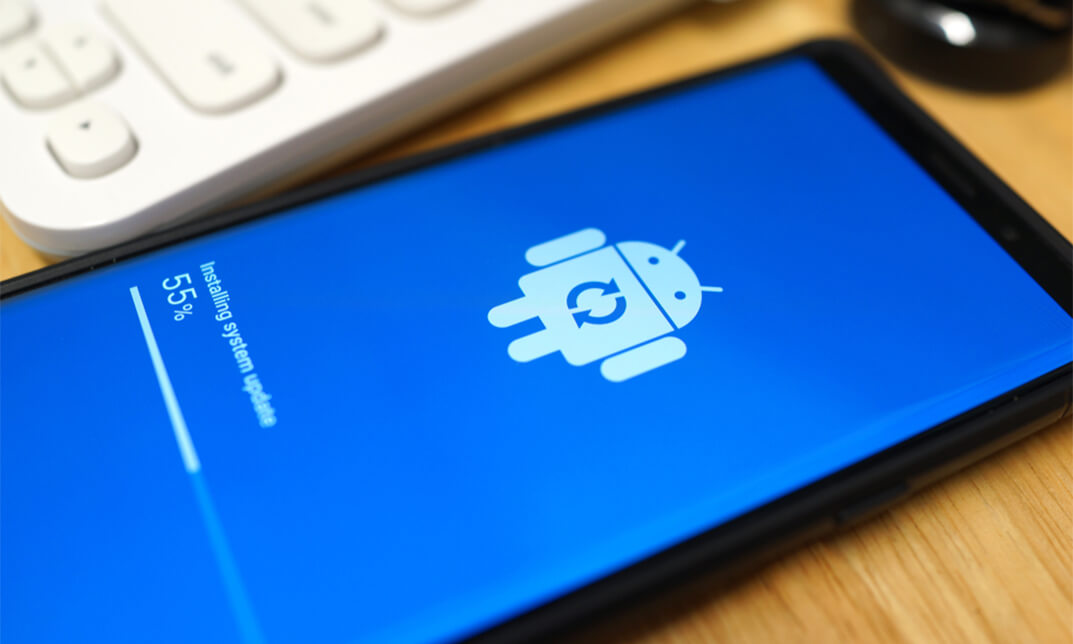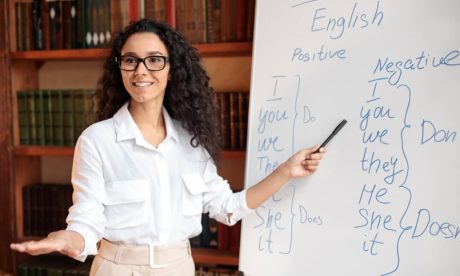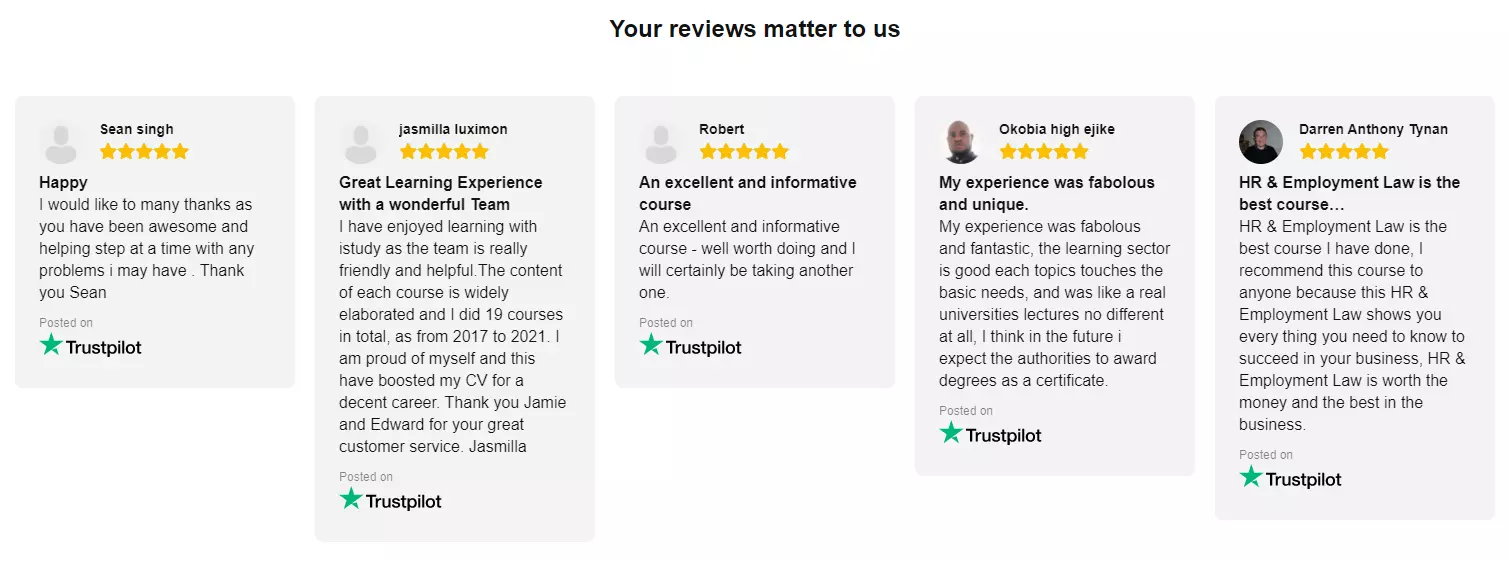Description
If you’re keen on becoming a Pro Programmer when learning Android development and build stunning Android Apps using the best UI/UX Design principles, then The Complete Android & Java Bootcamp – Material Design UI/UX will be the right choice for you.
Through multiple engaging lessons, you’ll learn Java and Android Development for building material Design Apps, learn UI/UX and gain knowledge of Java and Android Development to create and design high-quality and scalable Android Material Design Apps. Moreover, learn how to install the tools and implement techniques to run Java programs like IntelliJ and install the Java libraries onto your machines such as Windows, Linux and Mac.
What you’ll learn
- Build robust UI/UX Material Design Apps
- Learn Java and Android Development
- Build Android Apps Using Android Fragments
- Use Android Material Design Animations for better User Experience
- Build Apps that Consume RESTful APIs
- Build Apps for Android Phones and Tablets
- Build Apps that Use Google Maps and Location
Requirements
- You should be able to use a computer
- Willingness and drive to learn, strong work ethics, a doer mentality
Who this course is for:
- Beginners, Intermediate, Expert Android App Developers
- Anyone who wants to learn how to build Amazing User Interfaces for Androids Apps using Material Design
- Anyone who wants to learn Java to build Android Material Design Apps
Course Curriculum
| Getting Started | |||
| What you’ll get from this Course? | 00:02:00 | ||
| How To Get Your Free Bonus Stuff? | 00:05:00 | ||
| Setup Java Development - Windows PC | |||
| Install Java, JDK and JRE (Windows PC) | 00:08:00 | ||
| Install Java JDK on Ubuntu | 00:07:00 | ||
| Install IntelliJ IDEA on Windows | 00:07:00 | ||
| Install Android Studio on Windows PC | 00:12:00 | ||
| Development Environment Setup for MAC Users | |||
| Install IntelliJ IDEA – MAC OSX | 00:07:00 | ||
| Install Android studio – MAC OSX | 00:25:00 | ||
| Let's Build A Quotes App - From Scratch in Less Than 30 Minutes! | |||
| Let’s Build A Quotes App – From Scratch in Less Than 30 Minutes! | 00:25:00 | ||
| Deep Dive into Java Programming Language - Java Basics | |||
| The Java Compilation Process | 00:01:00 | ||
| Variables in Java | 00:05:00 | ||
| Integers and Concatenating Variables | 00:08:00 | ||
| More Variables – Floats, Chars, Doubles and Shorts | 00:03:00 | ||
| Dart – Booleans | 00:03:00 | ||
| Relational Operators and If Statements | 00:10:00 | ||
| Java Basic Operations | 00:06:00 | ||
| Logical Operators and If Statements | 00:09:00 | ||
| For and While Loops | 00:08:00 | ||
| Introduction to Methods and Return Types in Java | 00:12:00 | ||
| Java - Intermediate Concepts and Topics | |||
| Introduction to Classes and Objects in Java | 00:15:00 | ||
| Instance or Member Variables in Java – Access Control | 00:09:00 | ||
| Java Access Modifiers Protected – Part 1 | 00:15:00 | ||
| Java Access Modifiers and Getters and Setters – Part 2 | 00:13:00 | ||
| Overloading Constructors | 00:05:00 | ||
| Introduction to Inheritance in Java – Part 1 | 00:13:00 | ||
| Java Inheritance – Part 2 | 00:11:00 | ||
| The Java Class Library | 00:14:00 | ||
| Java - Advanced Concepts and Topics | |||
| Introduction to Arrays in Java | 00:10:00 | ||
| Java – Arrays – Part 2 | 00:06:00 | ||
| Java – Introduction to ArrayLists | 00:10:00 | ||
| Java ArrayLists – Part 2 | 00:06:00 | ||
| Java HashMaps | 00:10:00 | ||
| Java HashMaps – Part 2 | 00:04:00 | ||
| Android Development - UI/UX Material Design App Development | |||
| The Android Studio IDE – Setup and Run App | 00:03:00 | ||
| Android Platform Architecture | 00:06:00 | ||
| Android File Structure | 00:08:00 | ||
| XML Files – Android User Interface and Constraint Layout | 00:14:00 | ||
| User Interface XML Properties | 00:07:00 | ||
| The R.java File | 00:14:00 | ||
| String.xml | 00:06:00 | ||
| The Manifest.xml File | 00:05:00 | ||
| Introduction to UI/UX Material Design | |||
| Introduction to UI and UX – Material Design | 00:12:00 | ||
| Android Material Design Introduction | 00:03:00 | ||
| Android Views and ViewGroups | 00:04:00 | ||
| Buttons and Textviews Properties – Deeper View | 00:12:00 | ||
| Continue Exploring Properties – Buttons and Textviews | 00:05:00 | ||
| Linear Layout | 00:06:00 | ||
| Relative Layout | 00:07:00 | ||
| Android Resources – Drawable Menu Layout – mipmaps | 00:15:00 | ||
| Understanding Pixel Density in Android – DPI | 00:05:00 | ||
| Understanding XML Drawables – Creating Shapes | 00:09:00 | ||
| Button State Selectors Using XML | 00:08:00 | ||
| XML Gradient | 00:03:00 | ||
| Introduction to Activities in Android - Android Platform Building Block | |||
| What’s an Activity? | 00:06:00 | ||
| Activity Life Cycle | 00:08:00 | ||
| Navigate to a Different Activity | 00:08:00 | ||
| Passing Data Between Activities | 00:13:00 | ||
| Passing Data Back to First Activity | 00:13:00 | ||
| Pet App – Part 1 | 00:11:00 | ||
| Pet App – Part 2 | 00:12:00 | ||
| Pet App – Final | 00:08:00 | ||
| Context in Android And Toast Class | 00:11:00 | ||
| Log Class | 00:07:00 | ||
| What’s Debugging – Breakpoints and Logging | 00:11:00 | ||
| Android Recyclerview - Deep Dive | |||
| RecyclerView – Introduction | 00:03:00 | ||
| Create our First RecyclerView | 00:11:00 | ||
| RecyclerView – Part 2 | 00:10:00 | ||
| RecyclerView – Part 3 | 00:17:00 | ||
| RecyclerView – Part 4 | 00:08:00 | ||
| RecyclerView – Adding Event Listeners to Each Row | 00:06:00 | ||
| RecyclerView – Tap Row and Show Another Activity | 00:14:00 | ||
| Understanding the Android App Creation Process - Build Course App | |||
| App Creation Process | 00:09:00 | ||
| Start Building Courses App – BAWP – Intro | 00:02:00 | ||
| Courses App – Create Project and Change Color Theme | 00:07:00 | ||
| Courses App – Setup Login Screen – Part 1 | 00:10:00 | ||
| Courses App – Login User Interface (UI) – Part 2 | 00:10:00 | ||
| Courses App – Creating Account UI | 00:13:00 | ||
| Courses App – RecyclerView – Create Course Row and Dashboard Activity | 00:09:00 | ||
| Courses App – Recycler Adapter – Part 1 | 00:10:00 | ||
| Courses App – Setup Listrow and Adapter – Part 2 | 00:12:00 | ||
| Courses App – Finishing up List Adapter – Part 3 | 00:11:00 | ||
| Courses App – Showing List | 00:07:00 | ||
| Courses App – Add on Click Listener Event | 00:12:00 | ||
| Courses App – Grid and Listviews Options | 00:22:00 | ||
| Using the Palette API and Circular ImageView | 00:18:00 | ||
| Courses App – Details Activity – Part 1 | 00:18:00 | ||
| Courses App – Show Class Image and Information on Details Screen | 00:10:00 | ||
| Courses App – Details – Reveal View Animation | 00:13:00 | ||
| Courses App – Adding Floating Button Animation | 00:11:00 | ||
| Courses App – Adding Comments to Course | 00:13:00 | ||
| Courses App – Colorize Using Palette API – Details Screen | 00:09:00 | ||
| Courses App – Finished Product – Congratulations and Challenge | 00:02:00 | ||
| Android Fragments - How to Use Fragments in Activities | |||
| Introduction to Fragments | 00:05:00 | ||
| Create First Fragment – Part 1 | 00:10:00 | ||
| Fragment From Java Code – Final | 00:07:00 | ||
| Introduction to ListFragments – Setup – Part 1 | 00:13:00 | ||
| Show Courses on Fragment List | 00:20:00 | ||
| Screensize Utitlity Class | 00:06:00 | ||
| SW600dp – Show it on Phone and Tablet | 00:10:00 | ||
| Creating Layouts with Two Fragments | 00:09:00 | ||
| Setup Details Activity and Fragment – Part 1 | 00:14:00 | ||
| Setup OnItemClick Listener – Take to Details Activity | 00:11:00 | ||
| Passing Data to Next Activity and Fragment | 00:15:00 | ||
| Final Fragment App | 00:11:00 | ||
| Connecting to the World - Networking in Android | |||
| What’s the WWW (World Wide Web)? | 00:05:00 | ||
| Web Technologies and the Web – Developer’s Perspective | 00:05:00 | ||
| Introduction to Android Libraries | 00:04:00 | ||
| Volley – Json ArrayRequest | 00:18:00 | ||
| Volley – String Request | 00:06:00 | ||
| Volley – JsonObject Request | 00:19:00 | ||
| Storage in Android - Shared Preferences Internal Storage | |||
| Introduction to Storage in Android – Shared Preferences | 00:14:00 | ||
| Write-Read to Text File – App – Honey-Do List | 00:19:00 | ||
| Database Introduction – SQLite in Android | 00:03:00 | ||
| Let’s Build My Grocery List – Demo | 00:03:00 | ||
| My Grocery List – Setup – Part 2 | 00:08:00 | ||
| My Grocery List – Setting up Popup AlertDialog – Part 3 | 00:08:00 | ||
| My Grocery List – Part 4 | 00:10:00 | ||
| My Grocery List – Part 5.1 | 00:10:00 | ||
| My Grocery List – Part 5.2 | 00:13:00 | ||
| My Grocery List – Part 6 | 00:11:00 | ||
| My Grocery List – Part 7 | 00:13:00 | ||
| My Grocery List – Adding Groceries to Database – Part 8 | 00:07:00 | ||
| My Grocery List – Part 9 | 00:18:00 | ||
| My Grocery List – Part 10 | 00:15:00 | ||
| My Grocery List – Edit and Update Grocery – Part 11 | 00:09:00 | ||
| My Grocery List – Final Product | 00:08:00 | ||
| Let's Build a News App - Infrmr News App | |||
| Introduction to Infrmr News App | 00:08:00 | ||
| News API Setup | 00:06:00 | ||
| News App – Row Layout | 00:13:00 | ||
| News App – Recyclerview Setup – Part 1 | 00:14:00 | ||
| News App – Volley Library Setup – Getting Data from API | 00:13:00 | ||
| News App – Show News Data on Recyclerview | 00:13:00 | ||
| News App – Show News Image and DateFormat | 00:07:00 | ||
| News App – Material Design Palette API | 00:09:00 | ||
| News App – Final – Infrmr App Finished | 00:17:00 | ||
| Location Based Applications - Using Google Maps and Location | |||
| Introduction to Location Based Applications – Google Maps | 00:12:00 | ||
| Maps – Adding Markers on Long Click | 00:11:00 | ||
| Android Maps – Adding Markers on Map – Part 2 | 00:12:00 | ||
| Getting Current Location and Updating Locations | 00:15:00 | ||
| Locations and Maps – Update Location and Add Multiple markers | 00:13:00 | ||
| Introduction to Geocoding – Getting Address From Latitude and Longitude | 00:10:00 | ||
| Geocoding – Getting Address – Part 2 | 00:09:00 | ||
| Adding Multiple Markers on Map – Part 1 | 00:11:00 | ||
| Adding Multiple Markers on Map – Part 2 | 00:12:00 | ||
| Let's Build the Earth Quake Follower App | |||
| EarthQuake App – Demo | 00:05:00 | ||
| EarthQuake App – Setup – Part 1 | 00:10:00 | ||
| EarthQuake App – Parsing Quake’s Coordinates – Part 2 | 00:11:00 | ||
| EarthQuake App – Displaying Markers on Map – Part 3 | 00:10:00 | ||
| EarthQuake App – Custom InfoWindow – Part 4 | 00:14:00 | ||
| EarthQuake App – Custom Details Popup – Part 5 | 00:09:00 | ||
| EarthQuake App – Popup Details – Part 6 | 00:12:00 | ||
| EarthQuake App – Adding a Webview – Part 7 | 00:18:00 | ||
| EarthQuake App – Changing Marker’s Color – Part 8 | 00:12:00 | ||
| EarthQuake App – Final Product | 00:16:00 | ||
| Getting Started with Google Firebase - Cloud Based Application Development | |||
| Firebase – Introduction to Cloud Based Services – Setup And Writing to Database | 00:15:00 | ||
| Firebase – Login Users and Setup Authorization | 00:13:00 | ||
| Firebase – Sign-in With Email and Password | 00:13:00 | ||
| Firebase – Creating Accounts | 00:09:00 | ||
| Firebase – Blog App – Demo | 00:05:00 | ||
| Blog App – Setup | 00:10:00 | ||
| Blog App – User Authentication – Part 3 | 00:14:00 | ||
| Blog App – Creating Menu – Part 4 | 00:14:00 | ||
| Blog App – User Interface for Post Activity – Part 5 | 00:12:00 | ||
| Blog App – Blog Recycler Adapter – Part 6 | 00:14:00 | ||
| Blog App – Setup AddPost Activity – Part 7 | 00:11:00 | ||
| Blog App – Setup AddPost – Part 8 | 00:09:00 | ||
| Blog App – Getting Images from Phone Gallery – Part 9 | 00:14:00 | ||
| Blog App – Saving a Full Post – Part 10 | 00:17:00 | ||
| Blog App – Populating All Posts – Part 11 | 00:16:00 | ||
| Blog App – Creating Users – Part 12 | 00:17:00 | ||
| Blog App – Adding a Profile Picture – Part 13 | 00:08:00 | ||
| Blog App – Save Profile Picture – Part 14 | 00:14:00 | ||
| Blog App – Final Product! | 00:04:00 | ||












